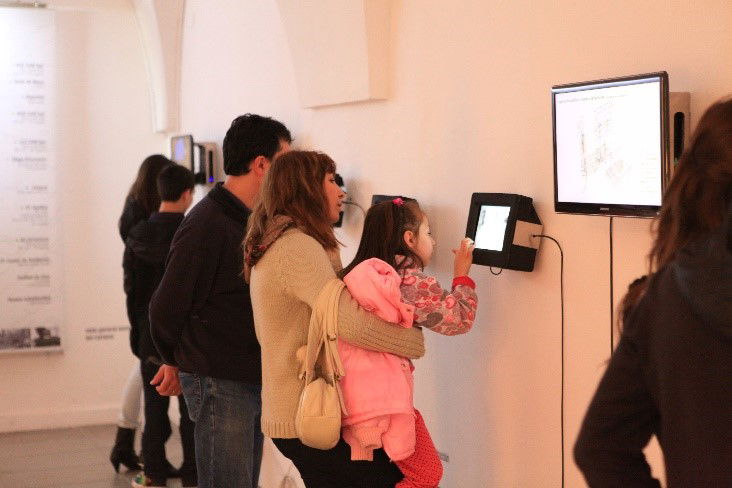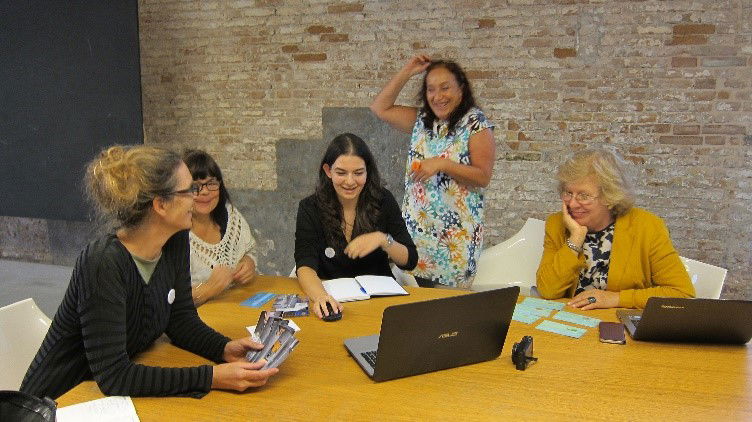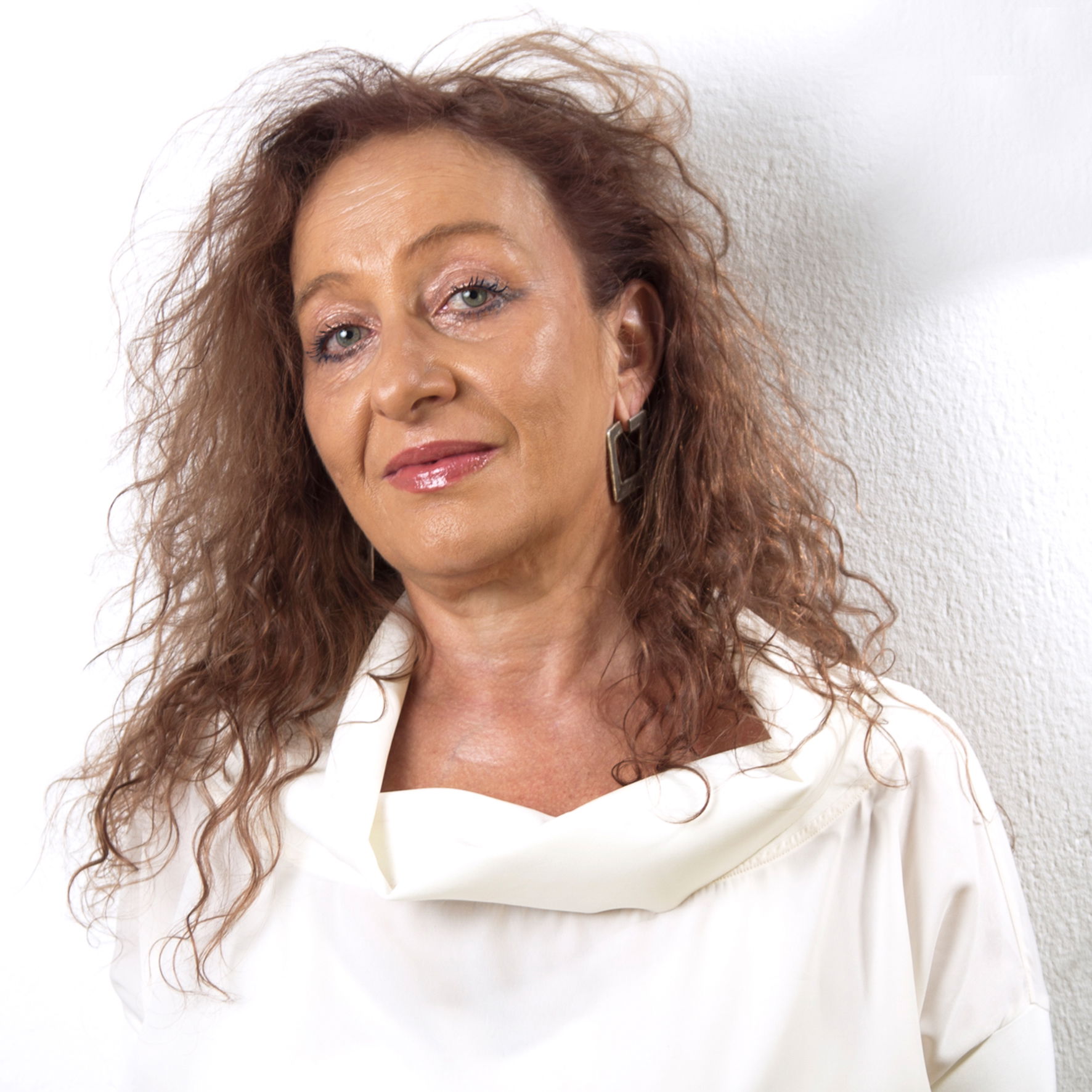ISSUE 5. A HOLISTIC LOOK AT ARTIFICIAL INTELLIGENCE BY LAURA P. SPINADEL
SPACES FOR EDUCATION AND ITS PROTAGONISTS The university as a generator of impulses for the regional development of a country, including a place for the emergence of a start-up scene, this can only occur within reality. The scenario of a region depends on many factors, such as history, geography, culture and people.
Why the real campus will never go away: The new University of Economics and Business of Vienna on the WU Campus became a real place where the magic of physically meeting acquires an added value by being able to neutralize the vandalism prevailing in the old location. This university was to attract academics outside the Crystal Tower to be fertilized by the society of "dirty realism". The architecture of this educational landscape had the additional task of promoting the process of rethinking the economy. But this campus was also to play an active role in the reality of the country and allow the most important political and economic debates to take place on it. This magical place could only be born because the combination of people of different ideologies propitiated the project to come to an agreement: we need a real campus that encourages each of us to leave our comfort zone to let new things emerge in science and teaching, as well as in interpersonal relationships.
Why the virtual campus is incipient: The question of whether the virtual campus will generate new forms of education is only in the early stages of development. To enable interaction and dialogue in the virtual space with a more significant number of people, we still have a lot to discover. We have to learn to create empathy with the mediation of machines to reach young people and educate them with experiences and knowledge. The simple transfer of knowledge is better when provided by machines than humans through artificial intelligence. Consequently, those who want to successfully impart learning through a screen, they have to be very creative with the multiple configuration possibilities and footprints that shape listeners. Just as learning is an experience in real space, it must also arouse curiosity in virtual space so that the audience wants to experience it in real time.

Why educational landscapes can emerge anywhere: A global space for debate and discussion may emerge through universities, but it does not have to, as philanthropists demonstrate with their foundations around the world. Universities have to face much stronger global competition because space has no borders. There is no longer an emotional attachment to a place, as one is free to acquire the best knowledge on one's own. This means that new rules of knowledge recognition will be necessary to give education nomads an academic status. And cities will suddenly see not only artistic and cultural tourism as an essential source of income, but also educational tourism. The demands of consumers – that is, of students – will naturally increase if, after two semesters of virtuality, they want to have a real educational experience after having been in the mountains or by some exotic sea. And teachers will also experience the pressure of having to position themselves in both real and virtual terms, not only with the global village but also with artificial intelligence. The multidimensional space, where AI brains meet real human brains from different cultures in search of answers, will create hybrid structures of collaboration that will surprise us all. The Age of Innovation in educational landscapes has opened up for both regulated and new forms of exchange. Time, space and experience need new proximity alternatives to be invented. Welcome to the Third Millennium!
LET'S CONTINUE WITH THE GLOBAL VILLAGE AND WHAT WE DO TO BUILD COMMUNITY A civilization that does not gestate its future in an integral way hardly achieves a sustainable and lasting development both for its economy and for its ecology as well as for its socio-cultural system.
Why not every story has economic underpinnings: Who has the right to dignified housing is a socio-political issue and not an economic one? When the city I live in, which is the capital of Austria in Central Europe, the Palaces for the People were built like the emblematic project of Karl Marx Hof, when the country was not rich after World War I. But at the beginning of the twentieth century, a movement of Social Democracy emerged called the "Red Vienna" and decided to face a Revolution through an Evolution that would allow modernization in a moderate process with the focus on social assistance, community housing and an educational reform. That is, an experiment of diverse changes with the aim of civilizing, culturizing and sanitizing the urban population whose overwhelming majority, including the petty bourgeoisie, was understood as the "working class". The letter of introduction were the Superblocks with minimum housing that could only absorb 5% of the salary of its inhabitants. Red Vienna provided 11% of the city's population with foster housing and by the end of the twentieth century 70% of Vienna's inhabitants lived in communal housing. It is interesting to reflect on the initial statement because even if the current costs are not 5% of a worker's salary, I believe that the instrument allowed to create a city with a social and cultural mixture in all its extension. The Vienna that remains fundamentally Red now allocates a third of the homes in every complex to the neediest.
Why we should stop being just spectators of the advance of artificial intelligence: If before the pandemic I would have been asked how I see the evolution of humanity, I would have answered that the Fridays for Future movement, initiated by children and youth throughout the planet filled me with illusion and hope. And suddenly these new generations spent a lot of time with their families questioning everything we do. Why do we fly? Why do we eat meat? Why do we need so many clothes? Why...............? And when I hear all over the planet how so many sensors, robots, nanochips as well as smart waves will allow us to work less, live longer and have much more time to enjoy life. I wonder if that's the path we all crave. Who decides that now we must put hundreds, thousands, millions of construction workers out of work so that machines of the highest technology and materials of dubious ecology create the habitat for us to develop life? Who is to blame for people not being happy in highly technologized smart Asian cities without ants, with pure air and perfect flowers where every minute is defined by the super brains that regulate everyone's urban life?

Why the urban potential of every community needs artificial intelligence as a partner: In the same way that there is no initial diagnosis more perfect than that of a machine to know what happens to our body. I am convinced that if we worked at all levels associated with robots, we could recover a lot of lost time. To do this, however, we must totally change our paradigms because to be partners of the machines and not simply their operators we need to develop many of our latent talents. The Artificial Intelligence of Machines will never be able to overcome the fundamental value of our intuition or the energy that a community can gestate from art or a set of beliefs to build a better world. But to achieve that as human beings, we must assume that what we know it is not enough...
WHY DO I BET WE CAN CO-CREATE SMARTER SYSTEMS FOR OUR HABITAT? Shaping the future together based on consensus and intelligent decision-making is my conviction as an alternative to all existing systems. Essentially with Natural, Human and Artificial Intelligence......... and there are those who will add Divine............ Pandemics, climate change, social conflicts... the challenges of this world can only be overcome if we develop better ways to find common ground.
Incorporating the voice of the many interests From bottom to top, from top to bottom: separation into inferior and superior? First some sit together, then others decide their ideas. In reality, you often need to have a lot of patience to combine the forces to support a vision instead of crushing it. Experience teaches us those projects can only be truly successful if they reflect the interests of everyone involved and if there are real opportunities for participation. Therefore, our comprehensive approach to addressing important issues of the future is materialized in the design of habitats and urban districts: qualified digital participation and impact oriented from the beginning of the process. Everyone gets their moment.

As a representative of holistic architecture and active for decades in the democratization of urban planning processes, my team and I have developed the URBAN MENUS method – which includes 3D tools – with which people can reach a consensus about the future of the city's living spaces, regardless of interests, previous education, and socioeconomic status of each of the interlocutors within the process: Decentralized in the web, the visions of the districts can be simulated together, toured and examined in relation to the SDG sustainability goals of the United Nations. The "dreams" of the ideal environment are visualized both from the technical-infrastructural-architectural point of view as well as through impact parameters of the environmental, social, and economic fields. Through visualization, the future becomes tangible and imaginable and therefore socially negotiable at eye level. The debate focuses on issues that affect everyone which are Happiness, Safety, Innovation, Profitability and Circularity. Your interests are not discussed because who is interested in producing housing for unhappy people? The diversity of people must be integrated at the beginning into decision-making processes which is a fundamental condition. The Sustainable Development Goals move from the abstract to the practical level to be directly involved in the configuration of small and large towns. When a community vision emerges, its application can be successful and resilient in times of crisis to incorporate it into the gestation system and development of resilience itself, that is, the ability to face adversity.
In a space for facilitated dialogue Everything we see, does not happen on its own. In this sense, digital participation also needs a properly moderated process. Because it takes will or learning experience to perceive diversity and let inspiration and cooperation emerge from it. We have been testing and improving the methodology for decades: With COMPACT CITY, we demonstrated the benefits of the city of short steps with a comprehensive infrastructure planning in residential construction 30 years ago. With the WU CAMPUS we made a university campus that renewed the educational landscapes and promoted regional development in our times. We are currently collecting and working on pioneering examples around the world that have jointly created a positive future in this spirit of our SMART CITY PLATFORM. Mayors, services, and products finally have a body for dialogue and not just marketing. We truly believe that the Smart City is a collective achievement and as such each of us must assume it. In our current examples in India, we are creating with SMART URBAN DESIGN INDIA a common digital workspace project for cities, towns and villages that are being developed in an inclusive manner in this country of 1.33 billion inhabitants. It is very interesting to observe how the bearers in the country of these concepts develop to achieve other types of Cities for Life and have decided to enter into action through URBAN MENUS incorporating anyone who has responsibilities or who would like to assume them with their contributions. At your service dear Mexico to continue with the process begun more than twenty years ago in Villahermosa, Tabasco with Habitat in Motion with the goal to integrate that thirsty youth in a process of Every Day for Our Future!
Addendum:
Laura P. Spinadel
Competence Center of Smart Urban Design URBAN MENUS BUSarchitektur & BOA GmbH, Vienna – Austria
URBAN MENUS window (web) https://urbanmenus.com/es/analisis/
Video: https://vimeo.com/manage/videos/380027992
Smart City Chief Call window (web) https://urbanmenus.com/es/platform-es/
Video: https://urbanmenus.com/es/construir-el-consenso-para-un-valor-agregado-integral-en-la-ciudad/
Smart Urban Platform Window (web) https://smartcity.earth/
Video: https://urbanmenus.com/es/ciudad-esponja-para-arboles-urbanos/
Window Campus WU A Holistic History (web) https://www.busarchitektur.com/es/phase/campus-wu-holismo
Video: https://vimeo.com/manage/videos/86247760
About the Author:

Laura P. Spinadel (1958 Buenos Aires, Argentina) is an Argentine-Austrian architect, urban planner, writer, educator and principal of the companies BUSarchitektur and BOA office for advanced randomness in Vienna. She has made an international name for herself with the works Compact City and Campus WU, both considered pioneers of the holistic architecture ideology. She is Doctor Honoris Causa at the Civic Parliament of the Humanity, Transacademy Universal Institute of Nations. Currently, she is working on the future planning URBAN MENUS** an Interactive Society Game to create our cities in 3D using a consensual approach.
** Granting Promotion XL Innovation AWS Austrian economy services of the Creative Industries (2017) & Impact Innovation funding Austrian Research Promotion Agency FFG (2020) & AWS Technology Internationalization 2021-2022 support for URBAN MENUS India market study for a Smart Area Development solution.